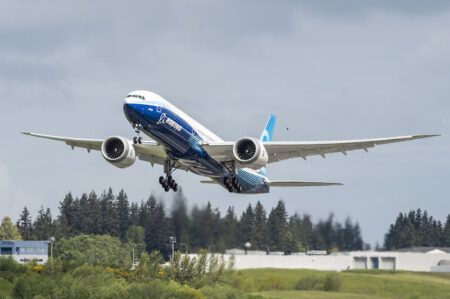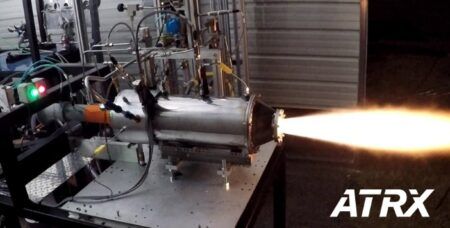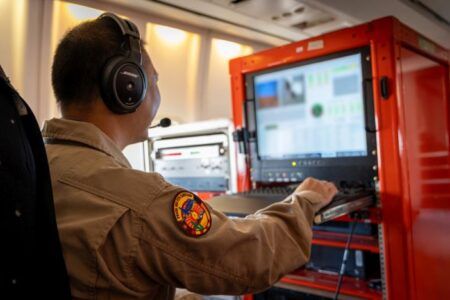The oldest Boeing 747 aircraft in active service may have taken her last flight. GE Aviation’s original B747 Flying Test Bed is heading into storage and flew what was most likely her final flight on January 25 at GE Aviation’s Flight Test Operation in Victorville, California.
The aircraft had a long history. It rolled off the assembly line on October 17, 1969, and made its first flight with Pan American World Airlines on March 3, 1970. Pan Am flew the aircraft, which was named the Clipper Ocean Spray, for 21 years, accumulating more than 86,000 flight hours and 18,000 cycles before GE acquired the aircraft in 1992.
Retired GE Aviation chief test pilot Phil Schultz, a GE Aviation engineer instrumental in the acquisition of the 747, said, “I was part of the effort to get the airplane bought. I went through the whole process, Getting the airplane, selecting the airplane, outfitting the airplane, specifying what we needed and who did what from data system to engineering to how we would install the engines.”
After undergoing modifications like removing seats, strengthening the left wing and tail for flight testing, and installing data systems, the Flying Test Bed began operations with GE in 1993 at its Flight Test Operation facility, which was then located in Mojave, California.
The aircraft provided critical flight data on more than 11 distinct engine models and 39 engine builds, including widebody engines likes the GE90, GEnx and the Engine Alliance GP7200; CF34 engines for regional jets; narrow body engines like CFM56 and LEAP; and the Passport for business aviation. With GE, the historic 747 aircraft completed more than 3,600 flight hours and 775 cycles before its final January flight – and it even got a new livery in 2015 replacing the old GE Aircraft Engines paint scheme with GE Aviation.
“We’ve done things with the 747 during flight test that nobody in his right mind would do with any airplane,” said Schultz. “We pushed engines to their limits—day after day, icing, high angle attack programs, terrible weather and operating conditions to ensure a pilot in any aircraft anywhere had the ability to push the throttle up at any time or in any weather condition to get what is needed.”
While the B747-100 flying test bed heads to storage, GE Aviation acquired a B747-400 aircraft from Japan Airlines in late 2010 and turned it into its new Propulsion Test Platform (PTP). Powered by GE’s CF6-80C2 engines, the new PTP offers better capabilities and improved integrated systems compared to the older flying test bed.
Gary Possert, retired chief test pilot at GE Aviation, who was part of the original B747-100 Flying Test Bed flight crew and flew on 705 flights, said, “The 747 is one of the best airplanes made in the history of mankind in my opinion. Very stable, easy to fly and extremely reliable. I will definitely miss the 747-100 Flying Test Bed.”
See a video of the flying testbed here.
August 21, 2017




